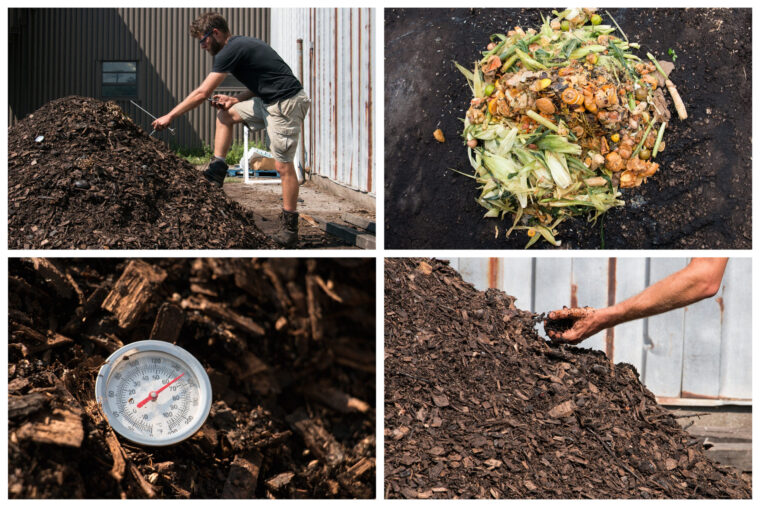Composting is nature’s way of recycling. At its core, it involves converting organic materials like food scraps and yard waste into nutrient-rich compost. This process not only diverts waste from landfills but also reduces greenhouse gas emissions. With food waste constituting a significant portion of daily waste, its composting becomes crucial. The use of food waste composters can make this journey approachable for beginners, enabling them to contribute positively to the environment from their backyards or even kitchens.
Types of Food Waste Composters

There are several ways to compost food waste, tailored to one’s needs and space. Some popular methods include:
Backyard bins: Large containers suitable for outdoor spaces.
Worm bins: Use worms to break down organic waste, ideal for both indoors and outdoors.
Countertop composters: Smaller systems for those with limited space.
Each has its advantages. For instance, backyard bins can handle larger volumes, while worm bins accelerate decomposition. Countertop composter is great for apartment dwellers. Choosing depends on one’s volume of waste, available space, and commitment level.
Setting Up Your Composter
Starting with composting is easier than one might think. First, pick a spot that’s convenient but also offers some shade. Sunlight can dry out the compost, slowing the process. Begin by layering coarse, dry materials like twigs at the base for good airflow. Gradually add green (nitrogen-rich) and brown (carbon-rich) materials in layers. An ideal mix would be 2 parts brown to 1 part green. This mix ensures efficient decomposition while preventing foul odors.
What to Compost

Compostable items from your kitchen include fruit and vegetable scraps, coffee grounds, eggshells, and tea bags. However, avoid adding meat, dairy, and oily foods as they can attract pests and cause bad odors. It’s also crucial to strike a balance. Too many greens can make your compost soggy, while an excess of browns can slow down the decomposition process.
Composting Do’s and Don’ts
For a thriving compost, follow these tips:
Do aerate your compost regularly to introduce air.
Don’t let it become too dry or too wet. Aim for the dampness of a wrung-out sponge.
Do chop larger materials into smaller pieces to speed up decomposition.
Don’t add diseased plants or non-biodegradable materials.
Routine care ensures efficient decomposition and a healthy compost pile.
Troubleshooting Common Issues

Every beginner might face challenges, but don’t be disheartened. Bad odors usually signal too much moisture or an imbalance between green and brown materials. Turn the compost and adjust your inputs. If pests become a problem, ensure no meats or oils have been added, and consider adding a layer of leaves or paper on top as a barrier. With patience and minor adjustments, you’ll soon master the art of composting.
Harvesting and Using Compost
Your compost is ready when it’s dark, crumbly, and smells earthy. This mature compost can now nourish your plants. Mix it with garden soil or sprinkle it on top. It not only improves soil texture but also provides plants with essential nutrients, enhancing their growth and resilience.
Conclusion and Sustainability
Composting is more than just waste reduction; it’s a commitment to sustainability. As you nurture your compost, you’re not just creating nutrient-rich soil but also playing a part in healing the Earth. Celebrate your efforts and inspire others. By sharing your composting stories, you become an ambassador for a sustainable future, one compost pile at a time.
